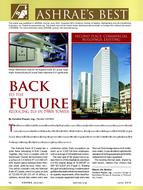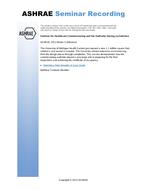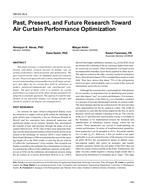Click here to purchase
An experimentally validated computational fluid dynamics (CFD) model was enhanced to predict the concentrations of ozone, and the products of its reactions with skin oils in the breathing zone of a person seated in an office cubicle with and without personal ventilation. A series of increasingly realistic hypothetical reactions were studied. The results show that the concentration distribution is not well mixed with noteworthy variations in the species distributions at different locations in the room, the personal micro-environment and the breathing zone. The assumption of well mixed conditions can lead to significant over or under prediction of inhalation exposure. The results also show that PV can remove oxidation products from the breathing zone effectively; however, PV can potentially increase the ozone concentration levels in the breathing zone if installed without an ozone filter.
Citation: ASHRAE Papers CD: 2014 ASHRAE Winter Conference, New York, NY
Product Details
- Published:
- 2014
- Number of Pages:
- 8
- File Size:
- 1 file , 610 KB
- Product Code(s):
- D-NY-14-C021


